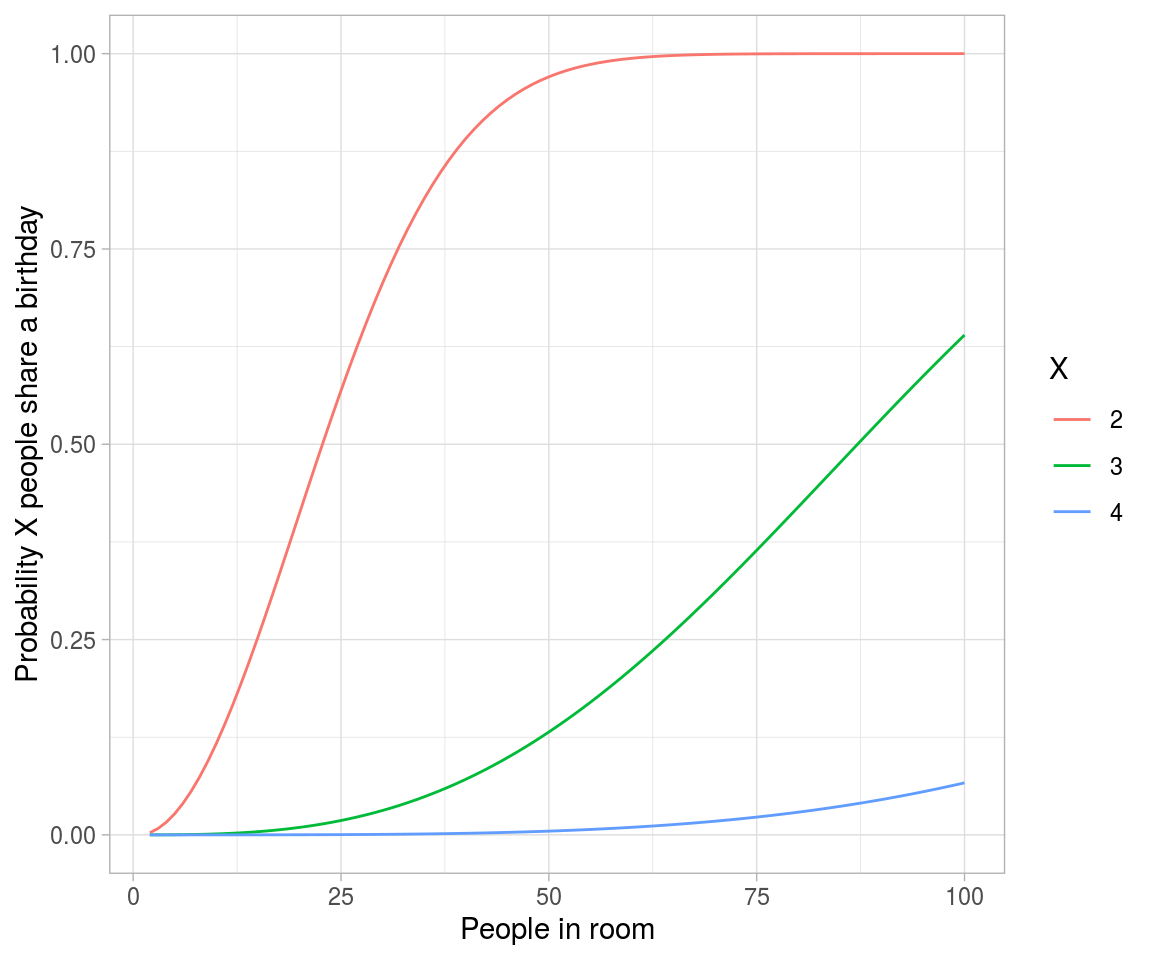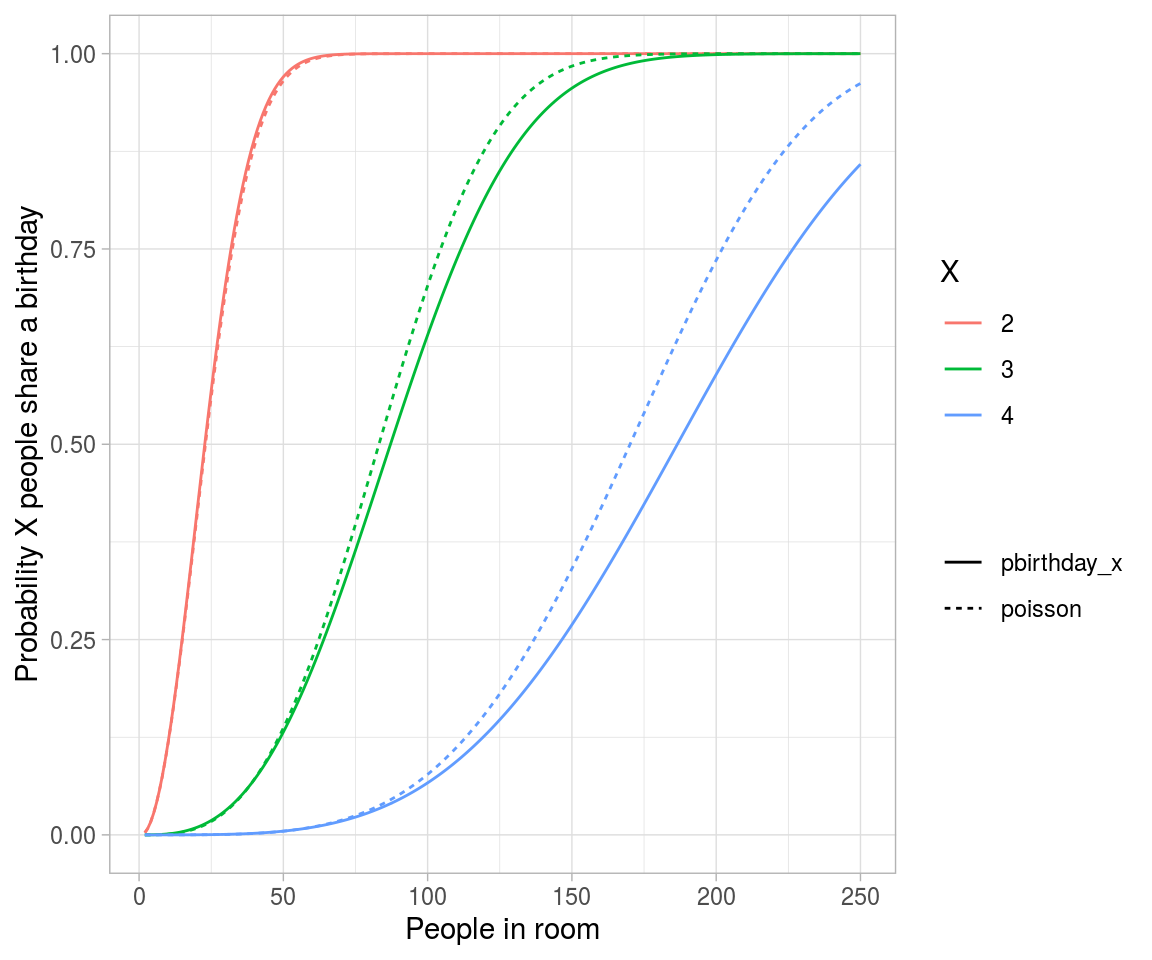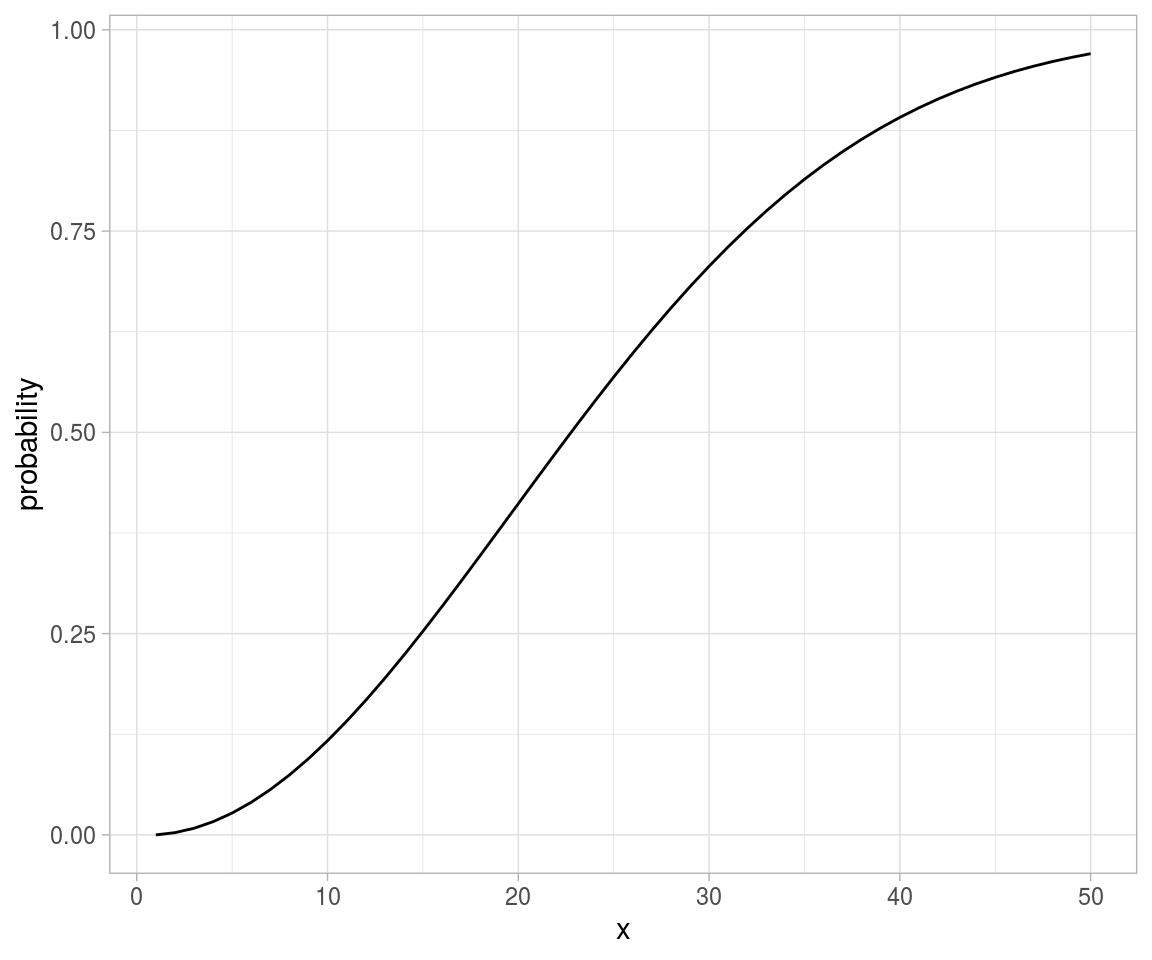crossing(n = 2:100,
x = 2:4) %>%
mutate(probability = map2_dbl(n, x, ~pbirthday(.x, coincident = .y))) %>%
ggplot(aes(n, probability, color = factor(x))) +
geom_line() +
labs(x = "People in room",
y = "Probability X people share a birthday",
color = "X")

crossing(n = 2:250,
x = 2:4) %>%
mutate(combinations = choose(n, x),
probability_each = (1/365)^(x-1),
poisson = 1-dpois(0, combinations * probability_each),
pbirthday_x = map2_dbl(n, x, ~pbirthday(.x, coincident = .y))) %>%
gather(type, probability, pbirthday_x, poisson) %>%
ggplot(aes(n, probability, color = factor(x), lty = type)) +
geom_line() +
labs(x = "People in room",
y = "Probability X people share a birthday",
color = "X",
lty = "")

pa <- function(n){
1 - (factorial(n) * choose(365, n))/(365^n)
}
map_dfr(.x = list(probability = 1:50), .f = pa) %>%
mutate(x = seq_along(probability)) %>%
ggplot(aes(x = x, y = probability)) +
geom_line()



